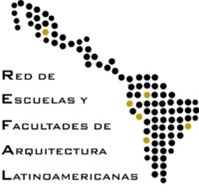Color temperature and its role within the artificial lighting of initial education spaces
DOI:
https://doi.org/10.47796/ra.2021i19.490Keywords:
Lighting, Temperature of color, Children’s education spacesAbstract
Early childhood education centers are the first space that children inhabit after home and are an essential part of their development. In this sense, the research analyzed the relationship between the color temperature present in artificial lighting systems in early childhood education spaces and different areas of child development in children from 0 to 5 years old. With the aim of demonstrating that, through the control of color temperature in artificial lighting systems, various areas of child development can be stimulated. Criteria within the physical, cognitive, psychomotor and sensory development of early childhood children and the qualities of color temperature were analyzed. In this way, a proposal for dynamic lighting is proposed that stimulates areas of child development through light scenes. In this sense, artificial lighting becomes a resource that can be used to stimulate activities carried out in initial education spaces and can become a design tool, with the aim of achieving a stimulating environment.
Downloads
References
Ata, S., Deniz, A., y Akman, B. (2012). The physical environment factors in preschools in terms of environmental psychology: a review. Procedia - Social and Behavioral Sciences, (46), 2034–2039.
Barrett, P., Davies, F., Zhang, Y, y Barrett, L. (2015). The impact of classroom design on pupils’ learning: final results ofaholistic, multi-level analysis. Building and Environment, (89), 118–133.
Blasco, A. y Vizcaino, M. (2012). Hablemos de Educación Infantil : Orientaciones y Recursos (0-6 Años). Wolters Kluwer.
Cachán, C., Begoña C., García, M., y Mateo, P. (2012). Estudio sobre la influencia de la iluminación en el rendimiento escolar. Luces CEI, (45), 14–17.
Choi, K., y Suk, H. (2016). Dynamic lighting system for the learning environment: performance of elementary students. Optics Express, 24(10), A907.
Fernández, E., Llobet, S., y González, T. (s.f.). Visión del color en los niños.
Hartstein, L., LeBourgeois, M., y Berthier, N. (2018). Light correlated color temperature and task switching performance in preschool-age children: preliminary insights. PLoS ONE 13(8), 1–14.
Hathaway, W. (1995). Effects of school lighting on physical development and school performance. The Journal of Educational Research, 88(4), 228–42.
Keis, O., Helbig, H., Streb, J., y Hille, K. (2014). Influence of blue-enriched classroom lighting on students’ cognitive performance. Trends in Neuroscience and Education 3(3–4), 86–92.
Mahone Group Heschong. (1999). California board for energy efficiency condensed report daylighting in schools Heschong Mahone Group.
María Pérez, P., y Jeta, A. (s.f.). El desarrollo emocional infantil (0-6 años): pautas de educación.
Myers, R. (1993). Los doce que sobreviven: fortalecimiento de los programas de desarrollo para la primera infancia en el tercer mundo. Organización Panamericana de la Salud.
Pulay, A., y Williamson, A. (2019). A case study comparing the influence of led and fluorescent lighting on early childhood student engagement in a classroom setting. Learning Environments Research, 22(1):13–24.
Rijswijk, J. V. (2013). The effect of different classroom light settings on the behavior and emotions of children with autism spectrum disorders.









